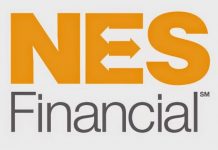The CBRE Pulse of U.S. Office Demand slowed moderately in December, likely reflecting renewed occupier caution over the COVID-19 omicron surge.
What is the CBRE Pulse Report?
To gauge the pace of recovery, CBRE has created three indices for the 12 largest U.S. office markets—Atlanta, Boston, Chicago, Dallas/Fort Worth, Denver, Houston, Los Angeles, Manhattan, Philadelphia, San Francisco City, Seattle, and Washington, D.C.
Using CBRE data, these indices measure office market activity each month and provide early indications of when and where momentum in office demand may be shifting. These metrics—space requirements of active tenants in the market (TIM), leasing activity, and sublease availability—provide a clear picture of office demand amid the COVID-19 pandemic.
December Findings
The U.S. Tenants in the Market (TIM) Index held steady in December at a level of 86, with modest declines in tenant inquiries in seven of the 12 markets tracked by CBRE. Three markets—Houston (118), Boston (118), and Dallas/Fort Worth (104)—had TIM requirements that exceeded pre-pandemic levels, while another three—Denver (94), Manhattan (93), and Seattle (93)—were over 90% of their pre-pandemic levels. Chicago (78), where office demand recovery has lagged, saw a substantial 11-point increase in TIM requirements in December, the biggest monthly gain.
Renewed caution by occupiers was reflected in the U.S. Leasing Index, which fell by 10 points in December to a level of 95. Eight of the 12 markets saw their Leasing Index levels fall, with the biggest declines in Houston (68), Washington, D.C. (62), and San Francisco (34). Nevertheless, half of the 12 markets maintained leasing levels that exceeded pre-pandemic levels, with Boston (192), Los Angeles (135), and Seattle (115) showing the most resilience.
Despite the leasing slowdown, the U.S. Sublease Availability Index improved in December, falling 4 points to 193. Unlike the TIM and Leasing indices, a decline in the Sublease Index is a positive indicator because it shows a shrinking amount of available sublease space. Nine of the 12 markets saw their sublease indices decline month-over-month. The biggest improvements were seen in Houston (88), Los Angles (158), and Atlanta (167), which each fell by 7 or 8 points. Despite the improvement, most markets continue to have a sizeable surplus of sublease space and the pace of improvement has been slow.
Notes: All market data is for the metropolitan area, except for San Francisco, which only includes the downtown market, and for Manhattan. Prior months’ data has been revised from previous reports to reflect new information. Data presented in this report supersedes that of previous editions of the Pulse of U.S. Office Demand.
U.S. Average Performance Index
Figure 1: Indexed Average Performance of Sublease Availability, TIM, and Leasing Activity for the Top 12 U.S. Markets
Source: CBRE Research, December 2021.
December Demand Recovery by Market
Boston remained the leader in office space demand recovery in December, followed by Dallas/Fort Worth and Los Angeles. A significant increase in TIM requirements in recent months has helped buoy the recovery of office demand in Houston, while strong leasing has helped Seattle and Atlanta progress toward recovery. Washington, D.C. slipped back a few paces with a slowdown in leasing and TIM requirements in late 2021. Manhattan’s recent progress eased, though it remained in a relatively strong position. Chicago and Philadelphia, where progress has been slower to occur, both saw notable improvement in late 2021, while San Francisco still struggled to regain its footing.
Figure 2: December Office Market Recovery Scale, Top U.S. Markets

Source: CBRE Research, December 2021.
Tenants in the Market Index
Figure 3: Indexed Square Footage of Tenant Requirements Compared with 2018/2019 Average
Source: CBRE Research, December 2021.
The U.S. TIM Index1 remained steady in December at 86. Three markets—Houston (118), Boston (118) and Dallas/Fort Worth (104)—had TIM levels that exceeded their pre-pandemic levels, while another three—Denver (94), Manhattan (93) and Seattle (93)—were over 90% of their pre-pandemic levels. These six markets have seen relatively stable TIM levels over the past three to four months, consistently at or above 90% of their pre-pandemic levels.
Progress toward recovery has been somewhat less steady in other markets. Atlanta (83) had seen its TIM level climb as high as 93 in October but has since seen modest retreat. Similarly, Washington, D.C. (76) had reached a TIM level of 88 in July before declining since then. Conversely, Chicago (78), where TIM recovery had been slower to materialize, had an 11-point increase in December and has seen steady improvement over the past several months, growing by 20 points since September.
In all, seven markets had declines in TIM requirements in December.
Figure 4: December 2021 TIM Index – Top 12 U.S. Markets

Source: CBRE Research, December 2021.
1 CBRE tracks the total square footage of requirements from active tenants in the market with minimum requirement of 10,000 sq. ft. The TIM Index compares the total monthly TIM requirements to a pre-pandemic baseline, which is the average of TIM requirements recorded by CBRE in 2018 and 2019. The index level for the baseline is 100. In most cases, when tenant requirements are given as a range, the index uses the minimum square footage. However, Seattle records TIM using the average requirement within the tenants’ size range, while Philadelphia uses the maximum square footage.
Leasing Activity Index
Figure 5: Indexed Monthly Leasing by Market Compared with 2018/2019 Average
Source: CBRE Research, December 2021.
Occupier concerns over the surging COVID-19 omicron variant contributed to a 10-point decline in the U.S. Leasing Activity Index2 in December to a level of 95. Only three markets had increases in their December Leasing Activity indices: Seattle (115), Dallas/Fort Worth (106) and Philadelphia (86).
Despite the monthly slowdown, six markets maintained Leasing Index levels at or above their pre-pandemic baseline. In addition to Seattle and Dallas/Fort Worth, these were Boston (209), Los Angeles (135), Atlanta (105) and Manhattan (100).
Figure 6: December 2021 Leasing Activity Index – Top 12 U.S. Markets

Source: CBRE Research, December 2021.
2 Leasing activity includes all new leases, expansions, and renewals of 10,000 sq. ft. or more that close each month. The Leasing Activity Index uses a rolling three-month average of leasing activity. Most markets are weighted 20% for the current month, 50% for the previous month, and 30% for the prior two months. For New York and Boston, where more accurate leasing data is available by the end of each month, the weights are 50% for the current month, 30% for the previous month, and 20% for the prior two months. The monthly rolling average is compared with a pre-pandemic baseline, which is the average monthly leasing activity between 2018 and 2019. The index level for the baseline is 100.
Sublease Availability Index
Figure 7: Indexed Sublease Availability by Market Compared with 2018/2019 Average
Source: CBRE Research, December 2021.
Note: In contrast to the Leasing and TIM Indices, a higher score on the Sublease Index is considered undesirable as it reflects an increase in available sublease space.
The U.S. Sublease Availability Index improved in December, falling 4 points to a level of 193—the lowest level since the pandemic began. Despite a modest uptick in October and November, the Sublease Availability Index has dropped by an average of 2 points per month since peaking at 206 in July.
Nearly every market in the Pulse saw its Sublease Index level fall in December. The biggest improvements were in Houston (88) and Atlanta (167), which saw their index levels fall by 7 and 8 points, respectively.
Reductions in sublease availability reflect several factors: less new sublease inventory is being added each month, the volume of sublease leasing is increasing and some previously listed sublease space is being withdrawn.
Figure 8: December 2021 Sublease Activity Index – Top 12 U.S. Markets

Source: CBRE Research, December 2021.
Office Demand Expected to Regain Momentum
While office demand retreated in December, the setback likely was temporary. Office demand is expected to regain its positive momentum in early 2022 as the omicron surge fades and occupiers continue to pursue long-term plans for office re-occupancy. The continued surplus of sublease space remains an enticement to occupiers looking to take advantage of favorable market conditions.
Robust wage growth is bolstering consumer spending, while business investment to strengthen supply chains and support capital projects likely will increase. This supports CBRE’s U.S. GDP growth outlook in the mid-4% range for 2022, which should help bolster office-using employment growth and thus office space demand.









































